Jian Tong
VideoRoPE: What Makes for Good Video Rotary Position Embedding?
Feb 07, 2025
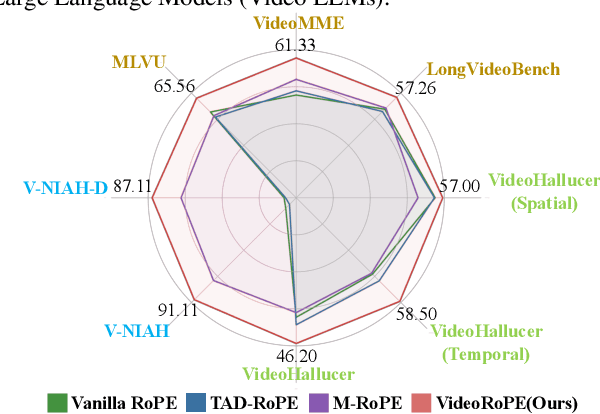
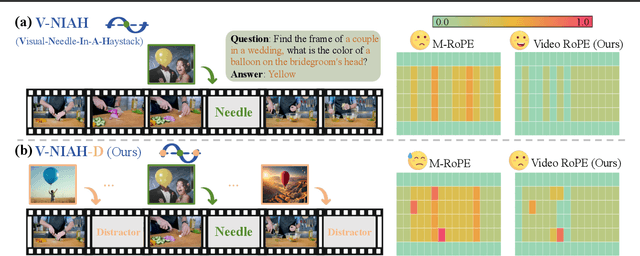
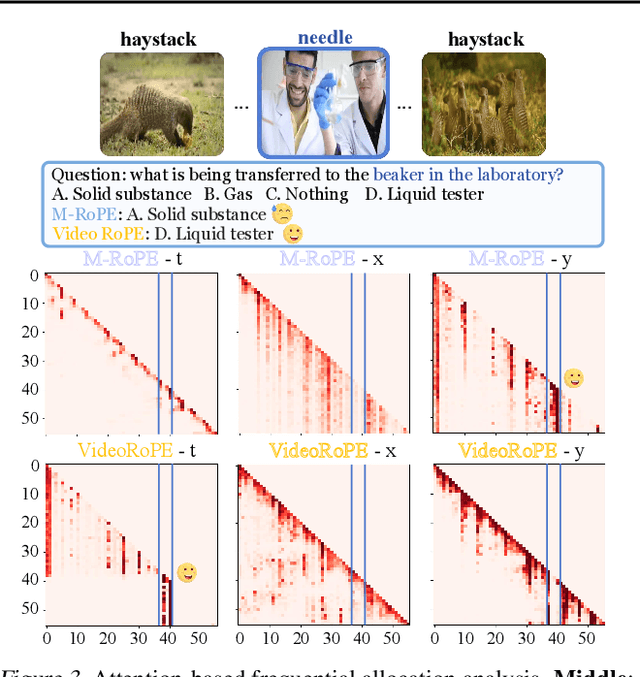
Abstract:While Rotary Position Embedding (RoPE) and its variants are widely adopted for their long-context capabilities, the extension of the 1D RoPE to video, with its complex spatio-temporal structure, remains an open challenge. This work first introduces a comprehensive analysis that identifies four key characteristics essential for the effective adaptation of RoPE to video, which have not been fully considered in prior work. As part of our analysis, we introduce a challenging V-NIAH-D (Visual Needle-In-A-Haystack with Distractors) task, which adds periodic distractors into V-NIAH. The V-NIAH-D task demonstrates that previous RoPE variants, lacking appropriate temporal dimension allocation, are easily misled by distractors. Based on our analysis, we introduce \textbf{VideoRoPE}, with a \textit{3D structure} designed to preserve spatio-temporal relationships. VideoRoPE features \textit{low-frequency temporal allocation} to mitigate periodic oscillations, a \textit{diagonal layout} to maintain spatial symmetry, and \textit{adjustable temporal spacing} to decouple temporal and spatial indexing. VideoRoPE consistently surpasses previous RoPE variants, across diverse downstream tasks such as long video retrieval, video understanding, and video hallucination. Our code will be available at \href{https://github.com/Wiselnn570/VideoRoPE}{https://github.com/Wiselnn570/VideoRoPE}.
Improving speech translation by fusing speech and text
May 23, 2023Abstract:In speech translation, leveraging multimodal data to improve model performance and address limitations of individual modalities has shown significant effectiveness. In this paper, we harness the complementary strengths of speech and text, which are disparate modalities. We observe three levels of modality gap between them, denoted by Modal input representation, Modal semantic, and Modal hidden states. To tackle these gaps, we propose \textbf{F}use-\textbf{S}peech-\textbf{T}ext (\textbf{FST}), a cross-modal model which supports three distinct input modalities for translation: speech, text, and fused speech-text. We leverage multiple techniques for cross-modal alignment and conduct a comprehensive analysis to assess its impact on speech translation, machine translation, and fused speech-text translation. We evaluate FST on MuST-C, GigaST, and newstest benchmark. Experiments show that the proposed FST achieves an average 34.0 BLEU on MuST-C En$\rightarrow$De/Es/Fr (vs SOTA +1.1 BLEU). Further experiments demonstrate that FST does not degrade on MT task, as observed in prior works. Instead, it yields an average improvement of 3.2 BLEU over the pre-trained MT model.
The Volctrans Neural Speech Translation System for IWSLT 2021
May 16, 2021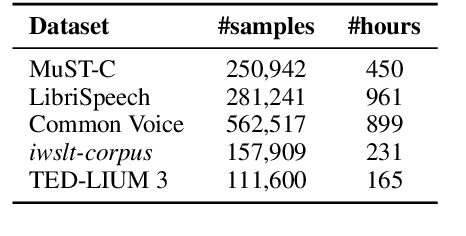
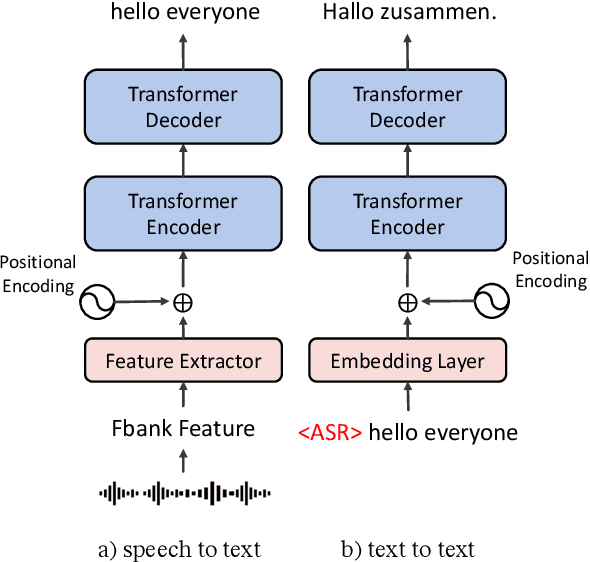

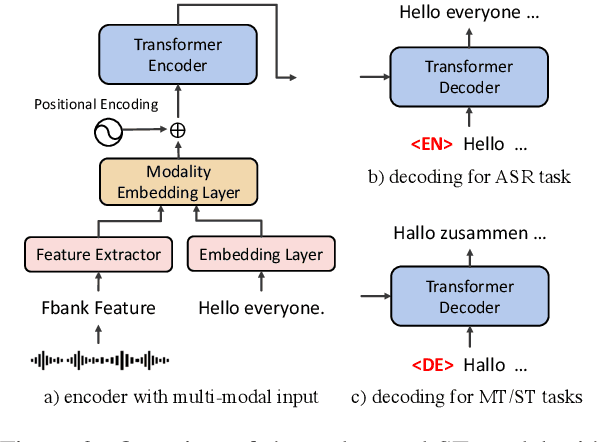
Abstract:This paper describes the systems submitted to IWSLT 2021 by the Volctrans team. We participate in the offline speech translation and text-to-text simultaneous translation tracks. For offline speech translation, our best end-to-end model achieves 8.1 BLEU improvements over the benchmark on the MuST-C test set and is even approaching the results of a strong cascade solution. For text-to-text simultaneous translation, we explore the best practice to optimize the wait-k model. As a result, our final submitted systems exceed the benchmark at around 7 BLEU on the same latency regime. We will publish our code and model to facilitate both future research works and industrial applications.
 Add to Chrome
Add to Chrome Add to Firefox
Add to Firefox Add to Edge
Add to Edge